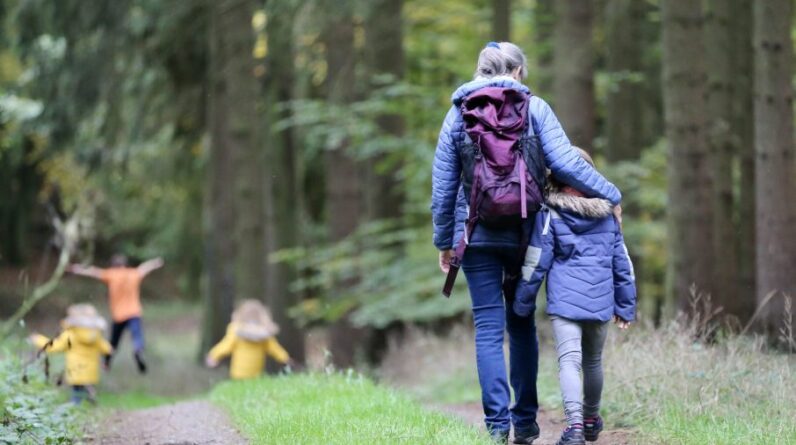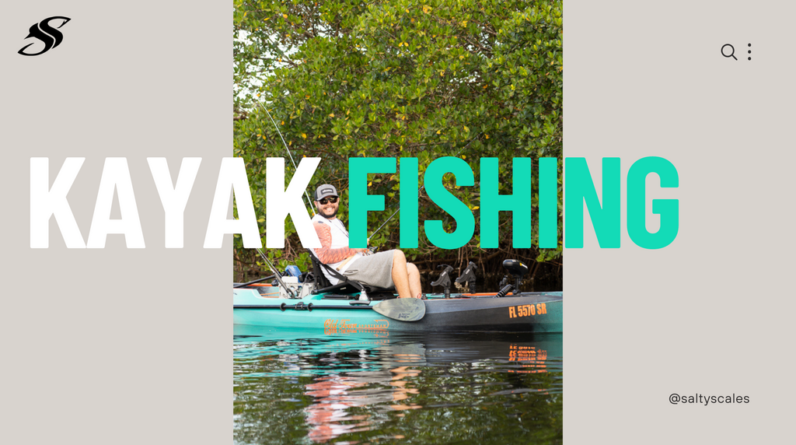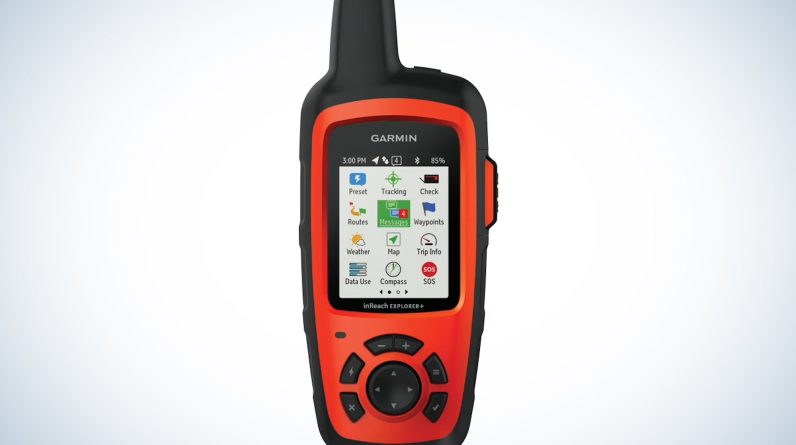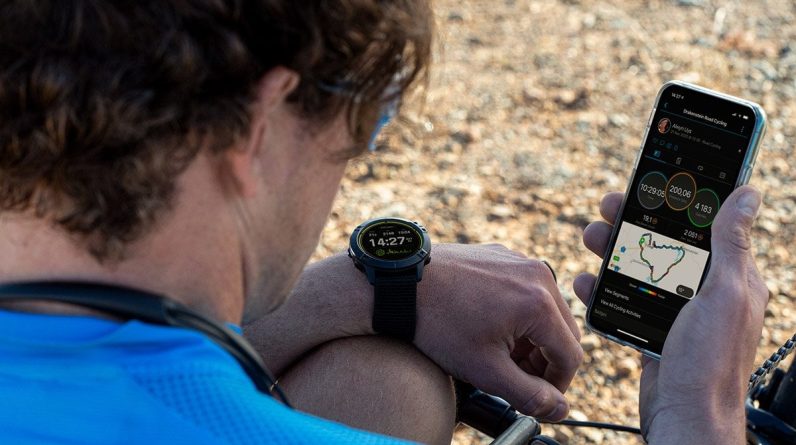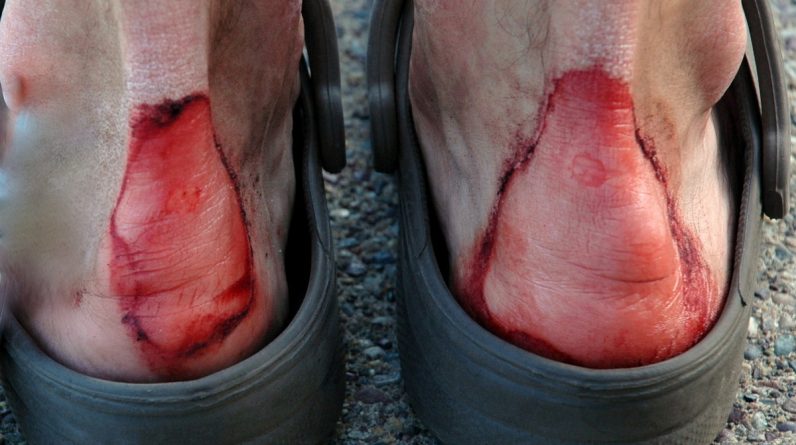
Are you an avid hiker who dreads the pain and discomfort of blisters? Well, fret not, because in this article, we will be discussing some handy tips and tricks to help you prevent blisters while hiking. Whether you are a seasoned hiker or a beginner, blisters can be a real nuisance and can easily ruin your hiking experience. So, let’s dive in and explore some tried and tested methods to keep your feet blister-free on your next hiking adventure!
First and foremost, it is essential to choose the right pair of hiking shoes or boots. Ill-fitting footwear is one of the primary causes of blisters. Make sure your hiking shoes or boots are of the right size and provide sufficient support and cushioning. It is also crucial to wear moisture-wicking socks that can keep your feet dry and minimize friction.
Another key tip to prevent blisters is to break in your hiking shoes before embarking on a challenging hike. Wearing them for shorter walks or hikes prior to your big adventure allows your feet to adjust to the shoes and helps to prevent any potential hot spots or friction that can lead to blisters.
Furthermore, taking regular breaks during your hike and giving your feet some rest can make a significant difference. Whenever you feel any discomfort or notice any hot spots, stop and take the time to address the issue before it turns into a full-blown blister. Applying moleskin or a blister-specific bandage to the troubled area can provide immediate relief and protect your skin from further damage.
So, there you have it! By following these tips, you can significantly reduce the chances of developing blisters while hiking. Be sure to check out our article for more in-depth information on blister prevention and treatment. Happy hiking!
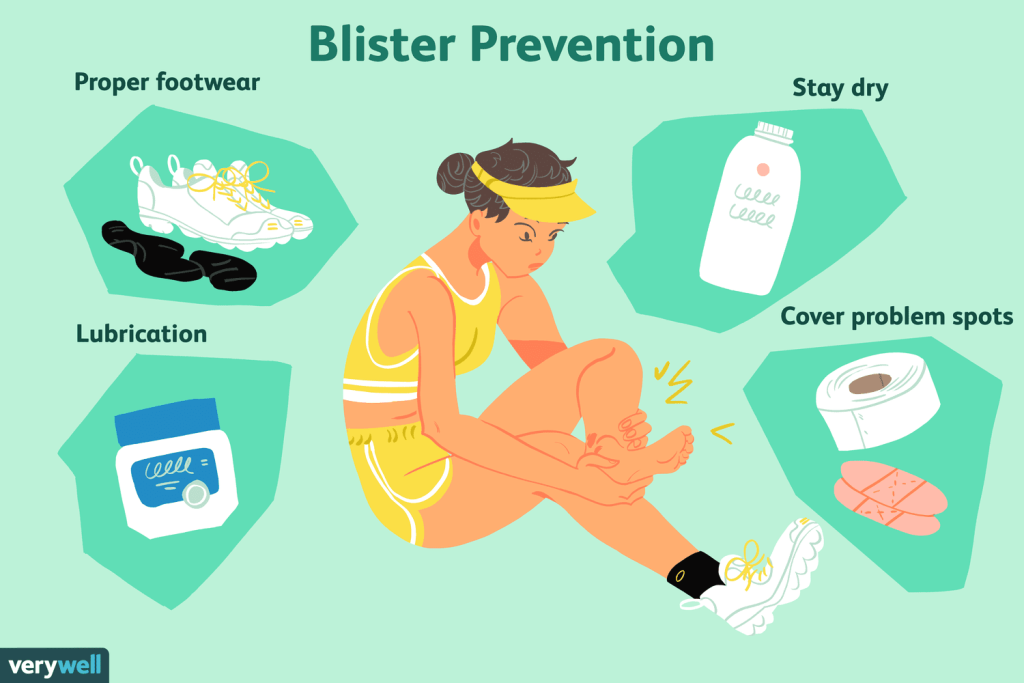
This image is property of www.verywellfit.com.
Tips for Preventing Blisters While Hiking
Hiking is a great way to explore nature, get exercise, and experience the beauty of the outdoors. However, nothing can ruin a hiking trip faster than painful blisters on your feet. Blisters can make each step agonizing and turn a fun adventure into a painful ordeal. But don’t worry, with the right knowledge and preparation, you can prevent blisters and enjoy your hiking experience to the fullest. Here are some tips to help you prevent blisters while hiking.
Choosing the Right Footwear
One of the most important factors in preventing blisters while hiking is selecting the proper footwear. Hiking boots are designed to provide support, protect your feet, and prevent blisters. When choosing hiking boots, consider the terrain you will be hiking on and the type of hiking you will be doing. There are different types of hiking boots available, from lightweight hiking shoes to sturdy hiking boots. Take your time to find the right fit and style for your hiking adventure.
Selecting Proper Hiking Boots
When selecting hiking boots, look for ones that have a sturdy sole for stability and grip, a padded collar and tongue for comfort, and a waterproof or water-resistant material to keep your feet dry in wet conditions. Ensure that the boots provide ample ankle support to prevent sprains and blisters. It is also important to choose boots that are breathable to prevent excessive sweating, which can lead to blisters.
Ensuring a Good Fit
A proper fit is essential for preventing blisters. When trying on hiking boots, make sure there is enough room in the toe box for your toes to wiggle comfortably, but not too much room to cause rubbing. Your heel should be secure and not slide up and down when walking. Walk around in the boots to ensure that they provide the necessary support and feel comfortable. Remember to try on hiking boots with the same socks you will wear while hiking to ensure a proper fit.
Breaking in New Boots
Before embarking on a long hiking trip, it is crucial to break in your new hiking boots. New boots can be stiff and cause friction, leading to blisters. Start by wearing them around the house for short periods of time to gradually break them in. Gradually increase the duration and intensity of wear, wearing them on short hikes or walks before taking them on a longer adventure. Breaking in your boots will allow them to mold to your feet and reduce the risk of blisters.
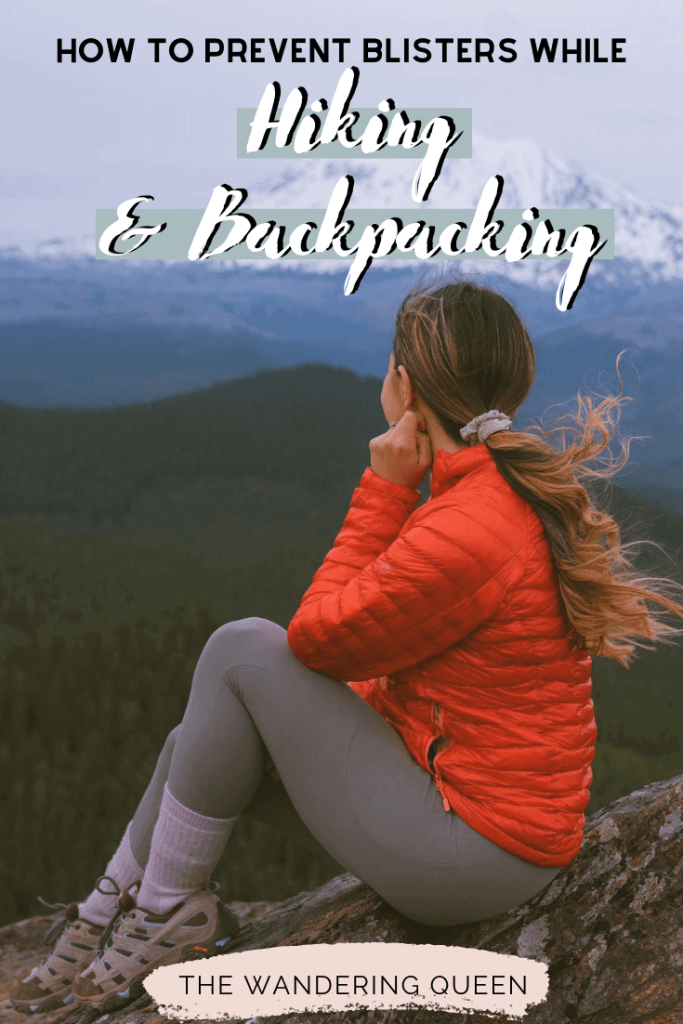
This image is property of www.thewanderingqueen.com.
Socks and Liners
Choosing the right socks and liners is just as important as selecting the right footwear. Socks and liners play a vital role in preventing blisters by wicking away moisture and reducing friction.
Choosing Moisture-Wicking Socks
Moisture-wicking socks are designed to keep your feet dry by pulling sweat away from your skin. Look for socks made from synthetic materials like polyester or merino wool, as they are excellent at wicking away moisture. Avoid cotton socks, as they retain moisture and can lead to blisters. Invest in high-quality moisture-wicking socks that are specifically designed for hiking to keep your feet dry and blister-free.
Considering Sock Liners
Sock liners are thin, lightweight socks that can be worn underneath your regular hiking socks. They provide an additional layer of protection against friction and help to wick away moisture. Sock liners can reduce the chances of blisters by providing a smooth surface between your foot and the hiking sock. Consider using sock liners if you are prone to blisters or if you will be hiking in hot and humid conditions.
Avoiding Cotton Socks
Cotton socks should be avoided when hiking as they absorb moisture and retain it, leading to wet and sweaty feet. Wet feet are more susceptible to blisters due to increased friction. Choose synthetic or merino wool socks that offer better moisture-wicking properties. These materials will keep your feet dry and minimize the risk of blisters.
Proper Foot Care
Proper foot care is essential for preventing blisters while hiking. Taking care of your feet before, during, and after your hiking trip will help keep blisters at bay.
Keeping Feet Clean and Dry
Before putting on your hiking socks and boots, ensure that your feet are clean and dry. Wash your feet thoroughly with mild soap and water, paying attention to the areas between the toes. Dry your feet completely, including between the toes, to prevent excess moisture buildup. Moisture can create a breeding ground for bacteria and increase the chances of blisters.
Applying Talcum or Antiperspirant
After cleaning and drying your feet, consider applying talcum powder or antiperspirant to help keep your feet dry. Talcum powder can absorb excess moisture and reduce friction, while antiperspirant can help control sweating. Apply a thin layer of either product to your feet, paying extra attention to areas prone to blisters, such as the heels and ball of the foot.
Trimming Toenails Appropriately
Keep your toenails short and well-trimmed to prevent them from rubbing against the inside of your hiking boots. Long toenails can dig into the skin and cause blisters. Use clippers to trim your toenails straight across, without rounding the edges. Be careful not to trim them too short or cut into the corners, as this can lead to ingrown toenails.
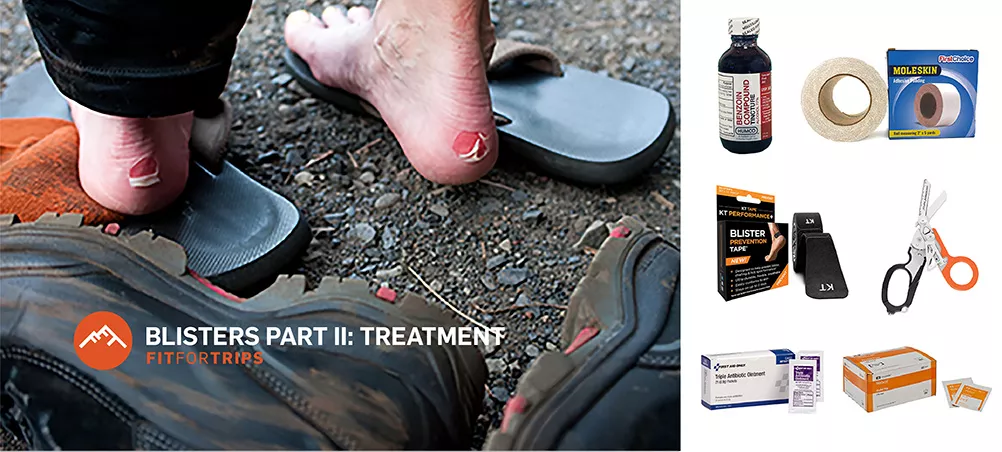
This image is property of fitfortrips.com.
Using Blister Prevention Products
If you are prone to blisters or want extra protection, there are several blister prevention products available that can help reduce friction and prevent blisters.
Using Moleskin or Blister Patches
Moleskin is a thin, soft material that can be applied to areas prone to blisters to reduce friction. It acts as a protective barrier between your skin and the hiking boot, preventing blisters from forming. Cut a piece of moleskin to fit the problematic area and apply it before putting on your socks and boots. Alternatively, blister patches are adhesive patches specifically designed to protect and cushion blisters. They conform to the shape of the blister and provide immediate relief.
Applying Blister Prevention Gel or Tape
Blister prevention gel or tape can be applied directly to areas prone to blisters. These products create a protective layer over your skin, reducing friction and preventing blisters. They are easy to apply and provide long-lasting protection throughout your hike. Consider carrying blister prevention gel or tape in your backpack for quick and easy application when needed.
Utilizing Toe Separators or Blister Pads
Toe separators or blister pads can be placed between toes that are prone to rubbing against each other, reducing friction and preventing blisters. They can also be used to protect existing blisters, providing cushioning and relieving pressure. Toe separators and blister pads are especially useful for hikers who experience blisters between their toes or on the sides of their feet.
Improving Socks and Boot Fit
Sometimes, making a few simple adjustments to your socks and boot fit can greatly reduce the risk of blisters.
Adjusting Lacing Technique
Proper lacing can distribute pressure evenly across your foot, reduce movement inside the boot, and prevent blisters. Experiment with different lacing techniques to find the one that works best for you. Consider lacing your boots tightly around your ankle to provide extra support and prevent excessive movement. Make sure the laces are secure but not too tight to restrict blood flow.
Using Blister-Resistant Shoe Laces
Consider replacing the standard laces that come with your hiking boots with blister-resistant shoe laces. Blister-resistant laces are designed to reduce friction and prevent blisters. They are made from materials that are less prone to causing irritation and are more durable than regular laces. Blister-resistant laces can be purchased at outdoor or hiking stores and are a simple yet effective way to prevent blisters.
Considering Boot Inserts or Insoles
Boot inserts or insoles can improve the fit and comfort of your hiking boots. They provide additional cushioning, support, and shock absorption, reducing friction and pressure on your feet. Consider using orthotic inserts or gel insoles designed specifically for hiking boots. These inserts can improve the fit of your boots and help prevent blisters.
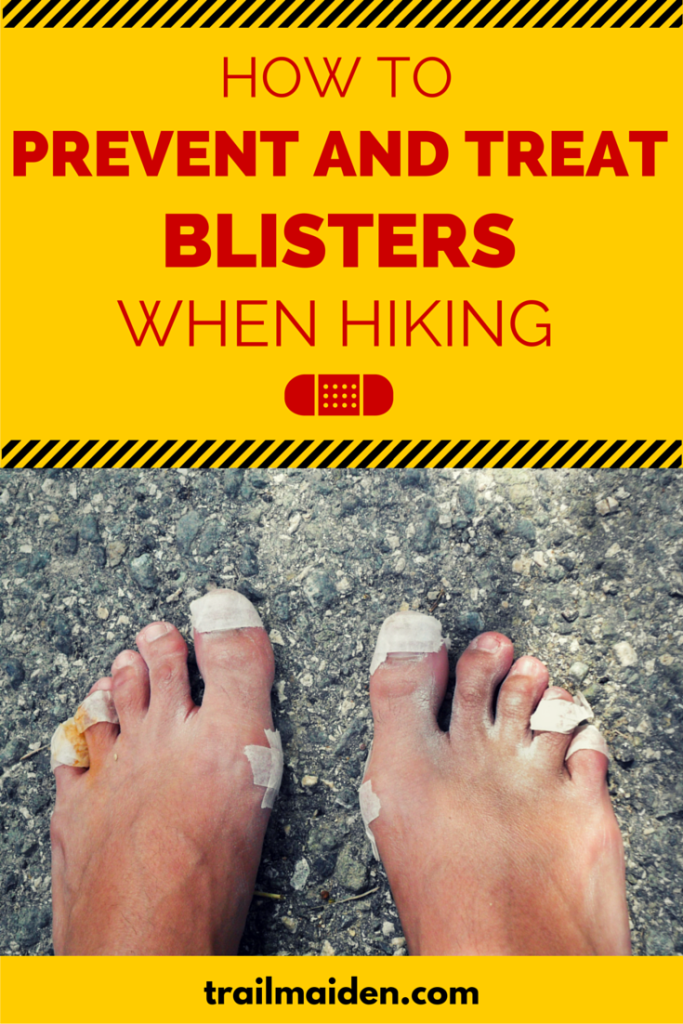
This image is property of trailmaiden.com.
Avoiding Wet Conditions
Wet conditions can increase the risk of blisters due to the softening of the skin and increased friction. Take precautions to avoid wet conditions while hiking.
Choosing Dry Terrain
When planning your hiking route, choose dry terrain whenever possible. Avoid areas that are prone to being wet or muddy, as they can increase the chances of blisters. If you encounter wet patches or streams, try to find alternative routes or walk around them to keep your feet dry.
Crossing Streams Carefully
If you need to cross a stream or encounter wet conditions, take precautions to keep your feet dry. Use proper techniques for stream crossings, such as finding stable rocks or using hiking poles for balance. Consider carrying extra socks and changing into dry ones after crossing wet areas to prevent prolonged exposure to moisture.
Carrying Waterproof Gear
Carry waterproof gear, such as rain jackets and waterproof gaiters, to protect your feet from getting wet during sudden rain showers or wet areas. Waterproof gaiters are especially useful for keeping water out of your boots and preventing moisture from seeping in.
Breaks and Rests
Taking regular breaks and allowing your feet to rest and breathe can help prevent blisters while hiking.
Taking Regular Breaks
Schedule regular breaks during your hike to give your feet a chance to rest and recover. Take off your boots and socks, allowing your feet to air out and dry. This will help reduce moisture buildup and minimize the risk of blisters.
Drying Feet During Breaks
During breaks, take the opportunity to dry your feet thoroughly. Use a towel or cloth to remove any excess moisture from your feet, paying attention to the areas between your toes. This will help prevent blisters caused by prolonged exposure to moisture.
Elevating Feet During Rests
When taking breaks, elevate your feet by propping them up on a log or rock. This will help reduce swelling and improve circulation. Elevating your feet can also help drain excess fluids and prevent blisters caused by excessive pressure.
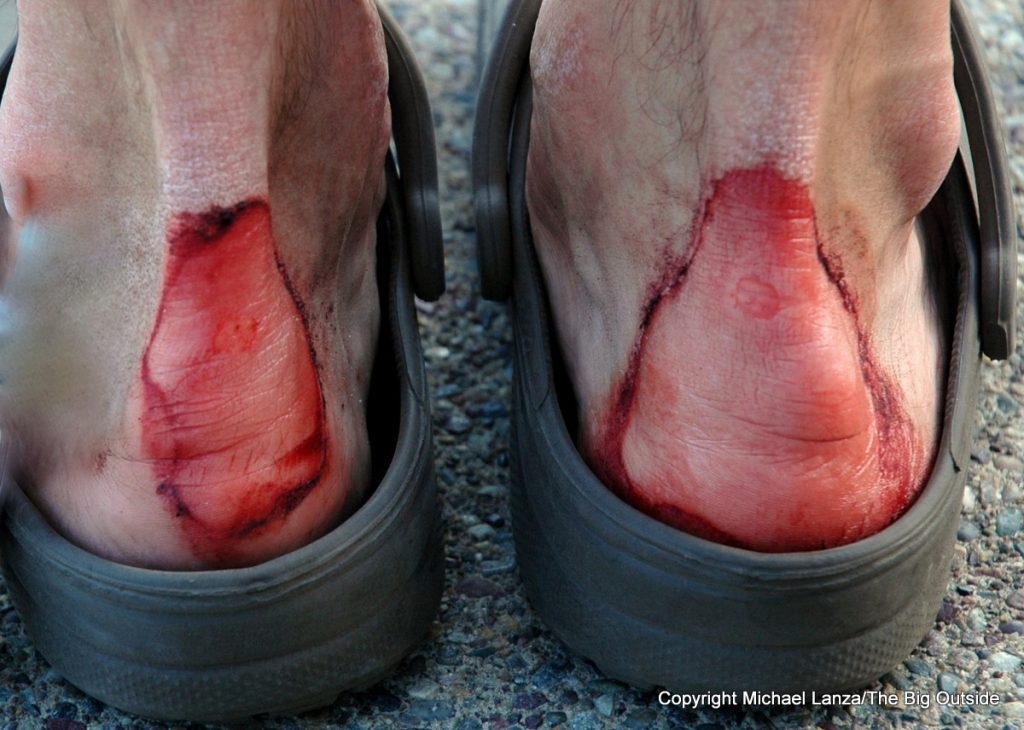
This image is property of i0.wp.com.
Monitoring Hot Spots
Monitoring your feet for any discomfort or hot spots during your hike is crucial for preventing blisters.
Checking for Any Discomfort
Regularly check your feet for any signs of discomfort during your hike. Pay attention to areas that feel hot, irritated, or painful. Catching these hot spots early can prevent them from turning into full-blown blisters.
Addressing Hot Spots Proactively
If you notice any hot spots or areas of discomfort, take immediate action to address them. Apply moleskin, blister prevention gel, or tape to the affected area to reduce friction and provide cushioning. Don’t ignore hot spots, as they can quickly develop into painful blisters.
Applying Preventative Measures
Even if your feet feel fine during the hike, it is still a good idea to apply preventative measures to vulnerable areas. Apply moleskin, blister prevention gel, or tape to high-risk areas of your feet, such as the heels, balls, and sides of the feet. This will provide an extra layer of protection and reduce the risk of blisters.
Proper Hiking Techniques
Maintaining proper hiking techniques can go a long way in preventing blisters while hiking.
Maintaining Proper Form
Maintain good posture and proper form while hiking to minimize friction and pressure on your feet. Walk with a natural stride, landing on your heels and rolling forward onto your toes. Avoid shuffling or dragging your feet, as this can cause rubbing and friction that leads to blisters.
Avoiding Excessive Friction
Pay attention to your stride and pace to avoid excessive friction between your feet and the hiking boots. Excessive rubbing can cause blisters to form quickly. If you feel your boots rubbing against a particular area, adjust your stride or stop to address the issue proactively.
Staying on Designated Trails
Stick to designated trails and avoid walking through overgrown vegetation or rocky areas off the trail. Vegetation can irritate the skin and rocks can cause excessive pressure or rubbing. By staying on designated trails, you can minimize the risk of blisters caused by environmental factors.
Conclusion
By implementing these tips for preventing blisters while hiking, you can enhance your hiking experience and enjoy pain-free adventures in the great outdoors. Remember to choose the right footwear, socks, and liners, and practice proper foot care. Utilize blister prevention products, improve sock and boot fit, avoid wet conditions, take breaks and rests, monitor hot spots, and maintain proper hiking techniques. With these precautions in place, you can minimize the risk of blisters and fully enjoy your hiking adventures without the distraction of painful feet. So lace up those boots, hit the trail, and hike to your heart’s content!

